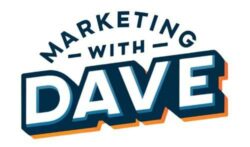Your Digital Marketing Nexus
With 25+ years in digital marketing, I specialize in discovering, measuring, and optimizing every aspect of it. For the month of July, the home page will highlight social media. If you missed past content or want to revisit a topic, check out the Content Calendar. Explore the insights below, and please share your thoughts.
Recent Blog Articles

Your LinkedIn Profile Mastered
Updated and expanded for 2025. Now available in Kindle (ebook) or paperback!
Upgrade your LinkedIn profile with less stress and better results.
Step-by-step guidance so you make the right changes the first time and get back to doing what you love.
Resource Spotlight
July Topic: Social Media
Quote
- A to Z of Social Media
- Top Social Media KPIs That Actually Matter
- Social Media Engagement Rate Calculator
- Evolution of Social Media
- Marketing With Dave Instagram Posts
- Instagram Analytics: Reels vs. Posts
- What's Your LinkedIn Social Selling Index
- What I Learned Posting on LinkedIn Every Day for a Month
- Marketing to Millennials
- Pinterest Analytics
I’ve read hundreds of marketing books, and each month I will focus on a different marketing topic. The books showcased above are ones I’ve personally read and confidently recommend.
Disclaimer: Please note these are affiliate links—if you click and make a purchase, I may earn a commission at no additional cost to you.


